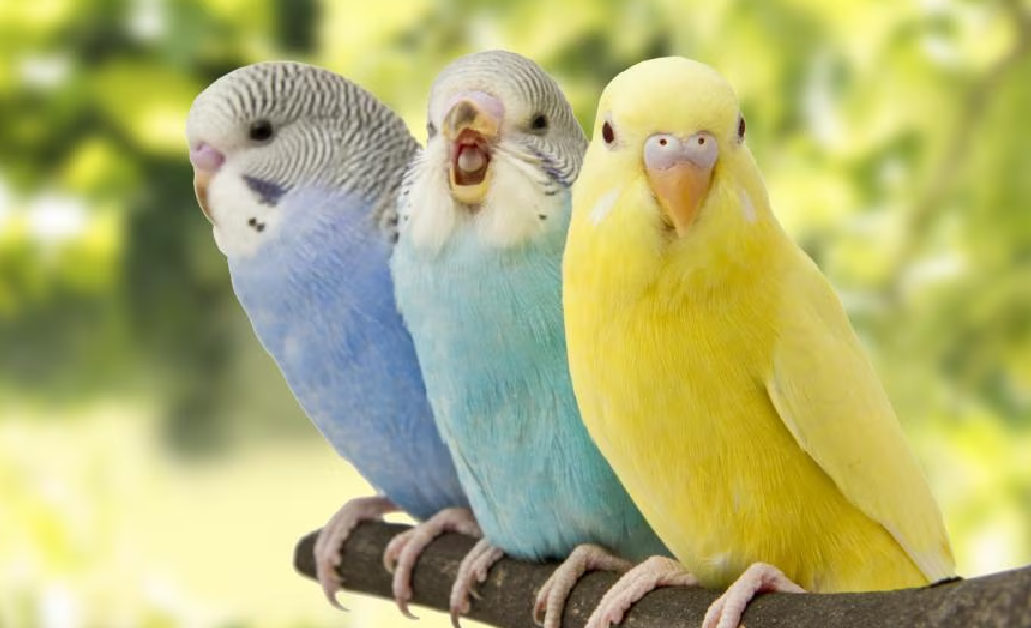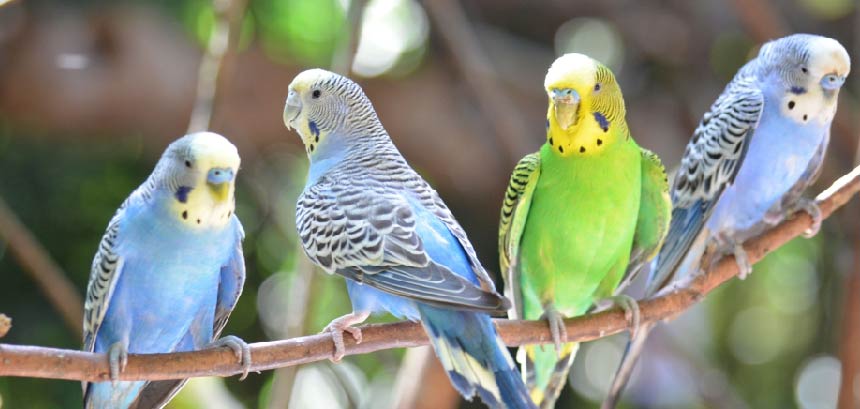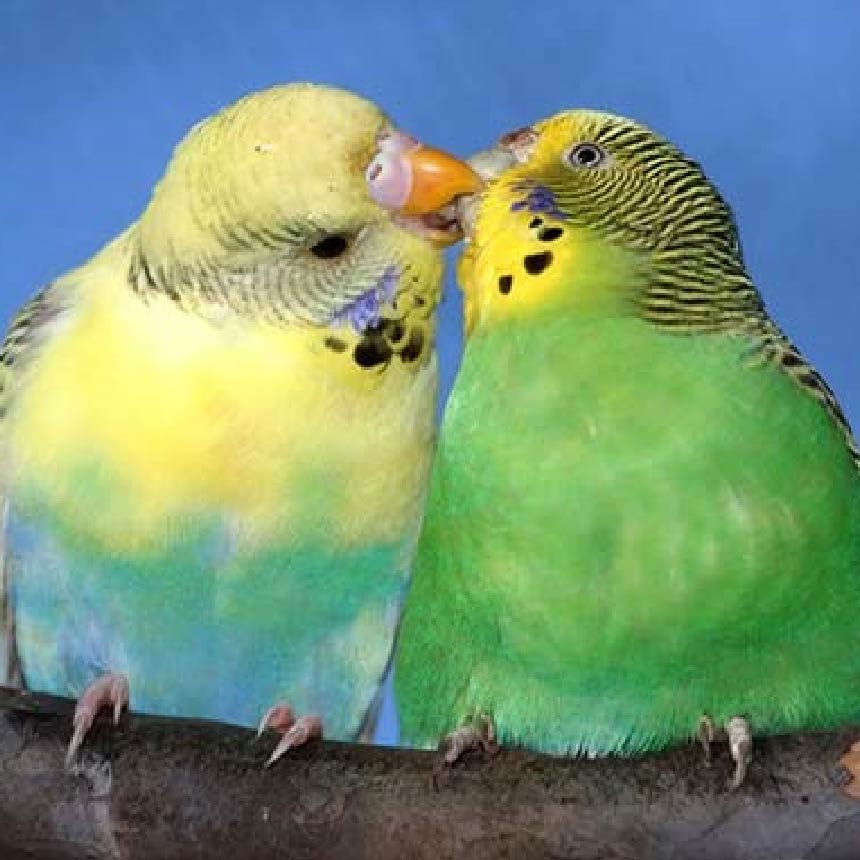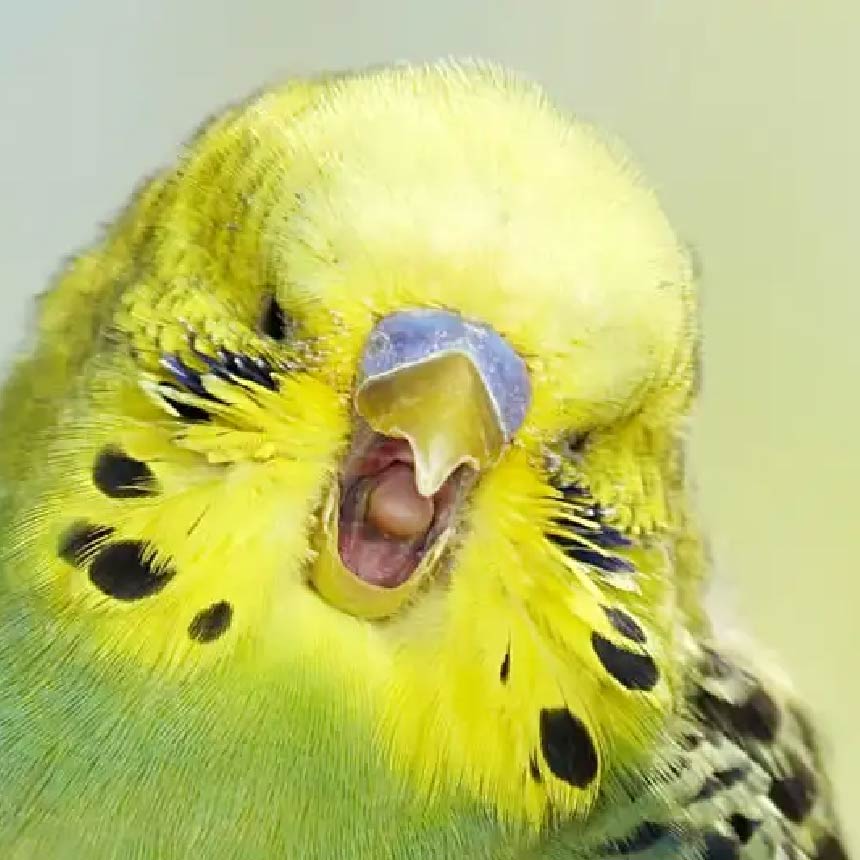
The Ultimate Guide to Keeping Budgies
The Ultimate Guide to Keeping Budgies: A Comprehensive Overview
Budgerigars, commonly known as budgies, are small, colorful birds that make delightful pets. Originating from Australia, these charming creatures have become popular worldwide due to their vibrant plumage, playful nature, and relatively easy care requirements. This article aims to provide a thorough guide on keeping budgies, covering everything from choosing your budgie to ensuring it leads a happy and healthy life.
Careful observation will help identify a sick budgie, paying attention changes in behaviour.
Choosing Your Budgie
Where to buy.
When deciding to bring a budgie into your home, it’s crucial to source your pet responsibly. Reputable breeders and pet stores are good places to start. Ensure the seller maintains clean conditions and that the birds are healthy and well-cared for. Avoid buying from overcrowded or dirty environments, as this may indicate poor care practices that can result in health problems for your new pet.
.
Picking a Healthy Budgie
A healthy budgie will be active, alert, and curious. Look for bright, clear eyes, clean feathers, and smooth skin around the beak and feet. Avoid birds that appear lethargic, have fluffed-up feathers, or show signs of illness, such as discharge from the eyes or beak.
Gender and Age Considerations
Male and female budgies both make excellent pets, but males are often more vocal and easier to train. Young budgies, typically under six months old, are more adaptable to new environments and training. However, older budgies can also be wonderful pets and might already be tamed.
“ Budgie Common Illnesses ”
Preparing for your Budgie
Cage Selection
The cage is your budgie’s primary habitat, so it’s essential to choose one that offers ample space. A good rule of thumb is to select the largest cage you can afford and accommodate in your home. The minimum size for a single budgie is approximately 18 inches wide, 18 inches deep, and 24 inches high, with bar spacing no wider than 1/2 inch to prevent escape and injury.
.
Cage Placement
Place the cage in a well-lit area, away from drafts, direct sunlight, and loud noises. Budgies enjoy being part of the household activity, so a living room or family room is ideal. However, ensure the cage is positioned at eye level to make your budgie feel secure.
Cage Accessories
Equip the cage with essential accessories, including perches, food and water dishes, and toys. Natural wood perches of varying diameters help keep your budgie’s feet healthy. Toys, such as bells, mirrors, and chewable items, provide mental stimulation and prevent boredom.
Daily Care Routine
Feeding Your Budgie
A balanced diet is crucial for your budgie’s health. A high-quality seed mix or pellet-based diet should form the staple of their nutrition. Fresh fruits and vegetables, such as apples, carrots, and spinach, should be offered regularly to provide essential vitamins and minerals. Always remove uneaten fresh food after a few hours to prevent spoilage.
.
Water
Fresh, clean water should be available at all times. Change the water daily and clean the dish to prevent bacterial growth.
Hygiene
Maintaining a clean cage is vital for your budgie’s health. Remove droppings and uneaten food daily, and clean perches, dishes, and toys weekly. A thorough cage cleaning should be done monthly, using a bird-safe disinfectant.
Socialization and Training
Bonding with Your Budgie
Building a bond with your budgie takes time and patience. Start by spending time near the cage, speaking softly to your bird. Gradually, your budgie will become accustomed to your presence. Offer treats through the bars to build trust.
Hand-Taming
Once your budgie is comfortable with you, begin hand-taming by offering a perch or your finger for it to step onto. Be patient and gentle; this process can take several weeks. Use treats to encourage your budgie to step up.
Training and Tricks
Budgies are intelligent and can learn simple tricks, such as stepping onto your finger, mimicking sounds, and even speaking a few words. Training sessions should be short, fun, and consistent. Positive reinforcement with treats and praise is the key to successful training.
Health and Wellness
Budgies are generally hardy birds, but they can suffer from various health problems, including respiratory infections, mites, and nutritional deficiencies. Regular vet check-ups are essential for early detection and treatment of health issues.
Signs of Illness
Monitor your budgie for signs of illness, such as changes in appetite, droppings, or behavior. Fluffed-up feathers, lethargy, and breathing difficulties are also red flags. If you notice any of these symptoms, consult an avian veterinarian promptly.
Preventive Care
Preventive care includes a balanced diet, clean living conditions, and regular exercise. Providing a cuttlebone or mineral block can help maintain beak health, while regular out-of-cage time allows for physical activity and mental stimulation.
Breeding Budgies
Understanding the Basics
Breeding budgies requires careful consideration and preparation. Ensure you have the time, resources, and knowledge to care for the additional birds. It’s essential to have a compatible pair; budgies typically form strong pair bonds and should be allowed to choose their mates naturally if possible.
Nesting Requirements
Provide a suitable nesting box within the cage. The box should be dark, quiet, and lined with appropriate nesting material, such as wood shavings. Ensure the breeding pair has a balanced diet rich in nutrients to support egg-laying and chick-rearing.
Raising Chicks
Once the female lays eggs, they will hatch in approximately 18-21 days. Both parents play a role in feeding and caring for the chicks. Monitor the nest regularly to ensure the chicks are healthy and receiving adequate care. Hand-feeding may be necessary if the parents are not adequately caring for the chicks.
Enrichment and Activities
Toys and Entertainment
Budgies are intelligent and curious birds that require mental stimulation. Provide a variety of toys, including puzzles, foraging toys, and swings. Rotate toys regularly to keep your budgie engaged.
Out-of-Cage Time
Allowing your budgie time outside the cage is crucial for its physical and mental health. Ensure the environment is safe, with windows and mirrors covered and no hazardous objects within reach. Supervised out-of-cage time allows your budgie to explore, exercise, and interact with you.
Social Interaction
Budgies are social birds that thrive on interaction. If possible, consider getting a second budgie to provide companionship. However, be prepared for the increased responsibility and ensure both birds have enough space and resources to prevent territorial disputes
Conclusion
Keeping budgies can be a rewarding experience, offering companionship and joy. By providing a suitable environment, balanced diet, regular socialization, and preventive health care, you can ensure your budgie leads a happy and healthy life. Whether you’re a first-time bird owner or an experienced avian enthusiast, the bond you develop with your budgie will be a delightful journey filled with mutual affection and discovery.
Additional Tips for Budgie Owners
Traveling with Your Budgie
If you need to travel with your budgie, ensure you have a suitable travel cage. The cage should be secure, well-ventilated, and equipped with a perch and food and water dishes. Cover the cage during travel to reduce stress, and never leave your budgie in a hot car.
Handling Emergencies
It’s essential to be prepared for emergencies. Keep the contact information of an avian veterinarian handy, and have a basic first-aid kit available. Familiarize yourself with common signs of distress and illness, so you can act promptly if your budgie needs medical attention.
Seasonal Care
Different seasons may require adjustments in care. In colder months, ensure your budgie’s cage is away from drafts and provide extra warmth if needed. In hotter months, prevent overheating by ensuring the cage is well-ventilated and offering opportunities for your budgie to bathe and cool down.
Budgie Behavior and Communication
Understanding Budgie Body Language
Budgies communicate a lot through their body language. For example, a budgie puffing up its feathers can indicate it’s relaxed or trying to keep warm. Conversely, if the feathers remain puffed for long periods, it could signal illness. Tail bobbing can indicate excitement but can also be a sign of respiratory distress if accompanied by labored breathing.
Vocalizations
Budgies are known for their vocal abilities. They chirp, sing, and can mimic sounds and words. A happy budgie will often chirp and sing throughout the day. Listen to your budgie’s vocalizations to gauge its mood and health. Sudden changes in vocal patterns can sometimes indicate health issues or stress.
Creating a Routine
Consistent Feeding Times
Budgies thrive on routine. Feed your budgie at the same times each day to provide a sense of security and predictability. A consistent schedule helps in monitoring their eating habits, which is crucial for noticing any sudden changes that might indicate health problems.
Sleep Schedule
Budgies need around 10-12 hours of sleep each night. Covering the cage with a breathable cloth can help create a dark, quiet environment for uninterrupted sleep. Ensure the cage is placed in a quiet area during the night to avoid disturbances.
Conclusion: A Lifelong Commitment
Keeping a budgie is a long-term commitment that can bring immense joy and companionship. By understanding their needs and behaviour’s, providing proper care, and ensuring a stimulating environment, you can foster a strong bond with your feathered friend. Whether it’s through their cheerful chirps, playful antics, or the trust they place in you, budgies have a unique way of enriching our lives. With love, patience, and dedication, you can ensure your budgie enjoys a happy, healthy life as a cherished member of your family
Post a Comment
You must be logged in to post a comment.








